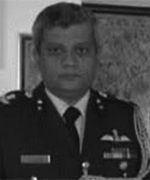The Great MRFA Hunt. Again
 Air Cmde T.K. Chatterjee (retd)
Air Cmde T.K. Chatterjee (retd)
The global tender for 126 Medium Multi-Role Combat Aircraft (MMRCA) floated by India in the first decade of the 2000s ended in a complex and protracted process that ultimately did not result in the intended acquisition. Here’s how it unfolded:
The Indian Air Force (IAF) projected a requirement for about 126 aircraft in 2001. After several delays, the Request for Proposal (RFP) was issued in August 2007. Six fighter aircraft competed: the Boeing F/A-18E/F Super Hornet, the Dassault Rafale, the Eurofighter Typhoon, the Lockheed Martin F-16, the Mikoyan MiG-35, and the Saab JAS 39 Gripen. After technical evaluation, the IAF shortlisted two finalists in April 2011: the Eurofighter Typhoon and the Dassault Rafale.
On 31 January 2012, Dassault Rafale was announced as the winner due to its lower life-cycle cost. The deal was estimated to cost USD 28-30 billion in 2014. Contract negotiations stalled due to disagreements over costs, technology transfer, and production guarantees. As happened in the case of the Mirage 2000 upgrade programme, Dassault also refused to give a warranty for those aircraft that were to be produced by Hindustan Aeronautics (HAL) after the initial few fly aways.
Despite efforts to finalise the deal, including expectations of signing by March 2015, the original MMRCA tender was eventually scrapped. Instead, in 2016, India opted for a direct purchase of 36 Rafale fighters in flyaway condition, moving away from the original plan of 126 aircraft with technology transfer and local production.
The MMRCA saga underscored the complexities of India’s defence procurement process and the challenges of balancing cost considerations with strategic objectives. If that initial process had been completed, the IAF would now have a fleet of over 100 Rafales, perhaps only an upgrade needed sometime in the next decade.
The New Players
Sadly, we are back at the starting block again, with a slight change in the nomenclature. It is the Multi Role Fighter Aircraft (MRFA) instead of the MMRCA. The contenders are the usual suspects, with variations of their previous offerings.
Two new toys add to the confusion. The Lockheed F-35 and the Sukhoi Su-57 are vectored thrust stealth aircraft. Their presence at Aero India this year caught media attention and sparked speculation. Media reports of the US offer for the F-35 fuelled the fire. The US government dangles the F-35 carrot, possibly to balance its trade deficit with India, while its counterpart, the Su-57, has always been available from our good old friend in need, Russia.
If that was not enough, lurching in the background is the indigenous Defence Research and Development Organisation (DRDO) effort of the Advanced Medium Combat Aircraft (AMCA), a fifth-generation 25-ton class twin-engine stealth aircraft. Its first flight is planned for 2028, and its induction is planned for 2034, using the LCA benchmark, give or take another 25 years.
With so many options, it would not be surprising if the government acted like a child in a toy store, backed by its all-knowing bureaucracy. Due to its practiced and perfected art of indecisiveness, it may ultimately end up with nothing, leaving the IAF perpetually chasing HAL to fulfil its product
Subscribe To Force
Fuel Fearless Journalism with Your Yearly Subscription
SUBSCRIBE NOW
We don’t tell you how to do your job…
But we put the environment in which you do your job in perspective, so that when you step out you do so with the complete picture.








